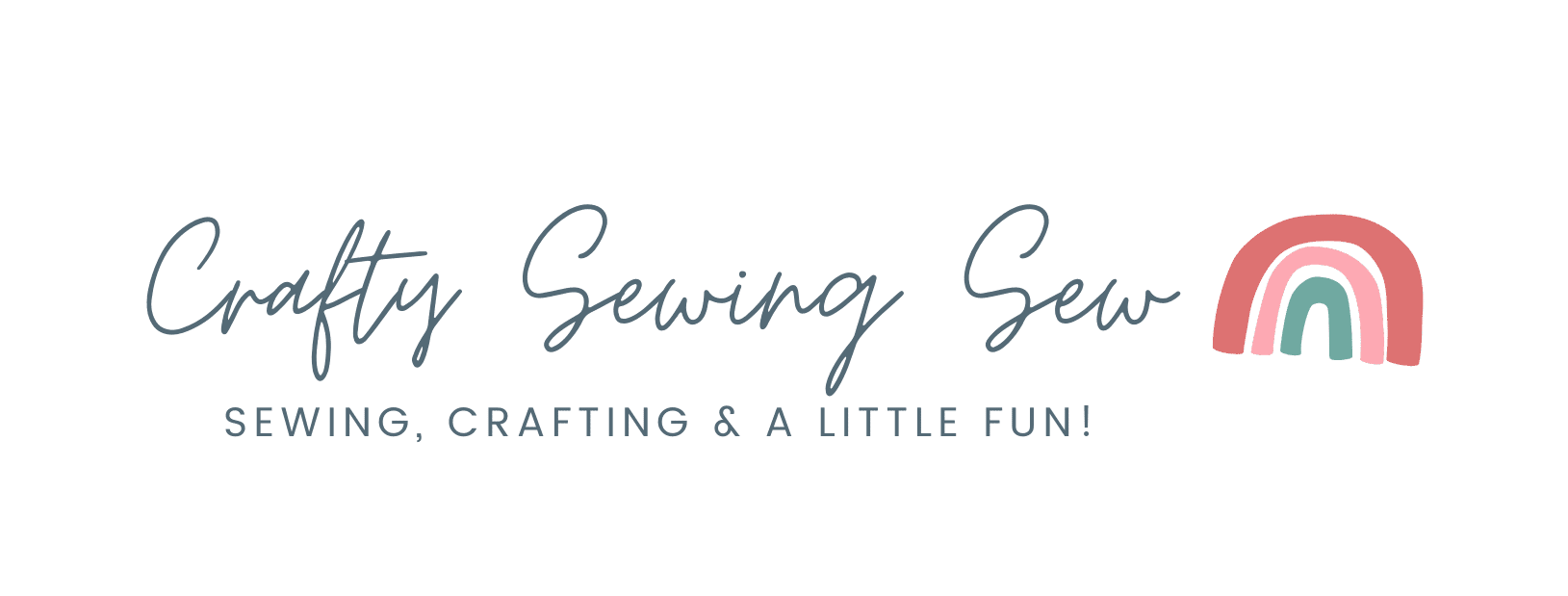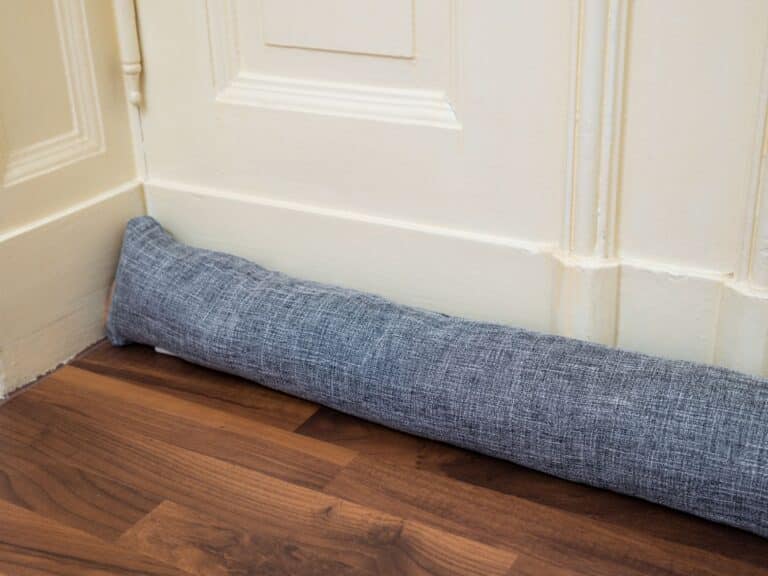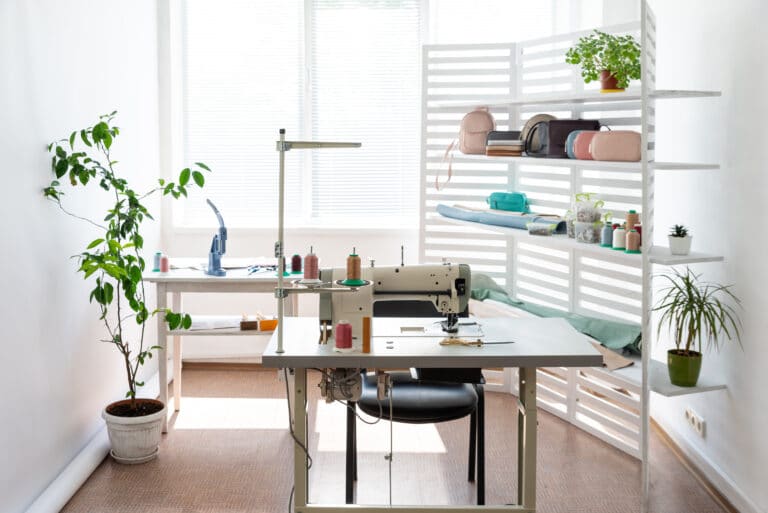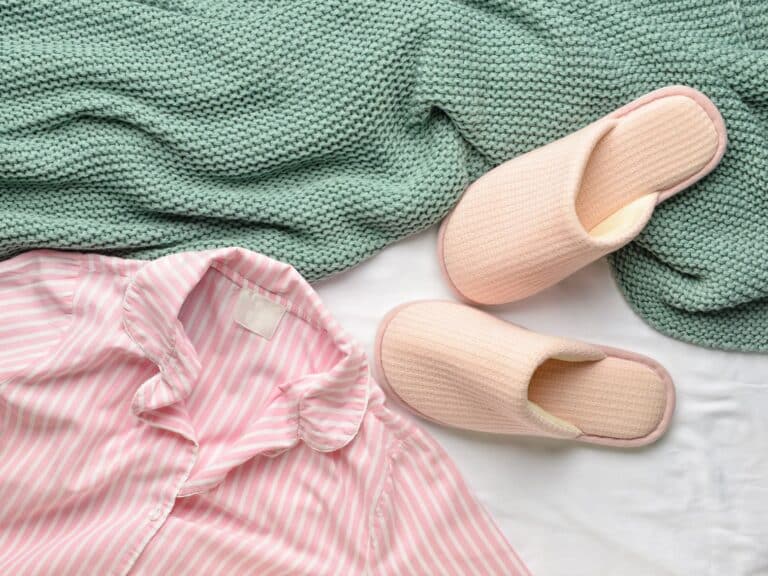How To Sew An Armchair Caddy
Some of the links below are affiliate links. As an Amazon Associate I earn from qualifying purchases. This means that, at zero cost to you, I will earn an affiliate commission if you click through the link and finalize a purchase.
Are you looking at how to sew an armchair caddy?
I kept seeing these super cute pieces of fabric with pockets that elegantly sits over the arm of your chair or sofa and was desperate to make my own. I love sitting with a film on and doing some hand sewing and embroidery so it was going to be very useful.
I like having a place to put everything when I am sewing otherwise I loose pins to the floor and my scissors under the sofa cushions and well it doesn’t end well.
Having a designated area to store my sewing supplies is heaven and I just had to share this make with you, just in case you are as clumsy as me!
Tools & Equipment
- Scissors
- Fabric – you can use as little as one fabric or multiple like I did.
- Pins & Sewing Clips
- Bias Binding – homemade is better in my opinion.
- 1/2 meter of Interfacing

How To Sew An Armchair Caddy
Step One
I create a paper template so I could physically see the shape and size before cutting into fabric. You can do this too if you wish or cut straight into the fabric following the measurements below.
Tip: Make sure all your fabrics have been ironed and pressed so you don’t have any wrinkles and allows the fabric to preshrink before using or washing.
To create the base piece and the biggest piece cut 2 x 11 inches by 18 inches.
I didn’t have enough of the same fabric so choose to use 2. You can use the same fabric for both pieces or do as I did.
Tip: I used a total of 4 fabrics for the project, you can use one, 2 or 6 if you wanted. I pulled my fabrics together to create a plan and decided what looked good where before cutting out.
Cut one Interfacing this size too.
Cut 2 x 6 1/2 inches by 11 inches – This will create your largest pocket, cut two pieces as you will need a lining piece. You can alternatively cut your lining piece in a plain fabric to save using your nicer fabrics.
Cut one Interfacing this size too.
To create the medium pocket cut 2 x 5 1/2 inches by 11 inches. Cut one Interfacing this size too.
Cut 2 x 3 inches by 11 inches into your chosen fabric to create the smallest pocket. Cut one Interfacing this size too.
To create accurate and square pieces look at using a rotary cutter and quilting ruler, I love using mine and find it so much easier and quicker to use.
These tools are really helpful with this tutorial on how to sew an armchair caddy as they really help create accurate rectangles and accurate measurements.
Step Two
Once you have all your pieces cut out, take one piece of each pocket size and the matching size interfacing to the ironing board.
Place the interfacing to the wrong side of the fabric and press into place.
Tip: Make sure the shiny/rough side is facing down, otherwise you will get the interfacing stuck to your iron and need to clean it.
Repeat for each of the pieces and place to one side. I also re-ironed the other pieces to make sure they were all nice and flat.
Step Three
Within this step, we are going to attach the bias binding to the pocket top. If you have patterned fabric like mine, make sure you place the binding on the top so the pattern is going the right way up.
I created the bias binding by cutting strips on the bias at 1.5 inches width. If you are new to making bias binding then I have a great tutorial to help you step by step.
You will need roughly 40 inches of binding to cover the pocket tops.
Place the binding open on the pocket front with the right sides together. Pin and clip into place and sew with a 1/4 inch seam.
Turn and fold the binding over to follow the creases and pin into place. You can sew this into place by hand with a slip stitch or by machine along the edge.
Alternatively, sew the two pieces of fabric right sides together with 1/4 inch seam and pull back over to create a neat edge. Iron the seam to create a crisp line.
Repeat for the other two pockets to create a nice crisp edge. I liked to use contrasting fabric for the binding to make it really stand out and colourful.
Step Four
To construct the pockets, they need to be placed one at a time on the large base piece.
Start by placing the largest pocket on one side. Line up the edges to make a neat and even line. Make sure the end with the bias binding edge is on the inside.
Sew the pocket into place with a 1/4 inch seam allowance. This will be covered later by a bias binding edge.
Repeat for the medium pocket and small, I chose to sew my pockets on separate but you can overlap these and sew in place in one go. Make sure the bottom longest length is lined up to the edge of the base piece.
Sew in place with a 1/4 inch seam allowance.
Step Five
I wanted to create sections within my pocket so I chose to create a pouch in which my scissors would sit and a pouch for fabric or patchwork pieces. I measured 3 1/2 inches across and marked with a pin.
Sew down from the top of the binding to the bottom edge of the fabric. This will create two pockets. You can change the size if you have something specific in mind, such as hoops, embroidery thread etc.
I did the same for the medium pocket before sewing on the smaller pocket. You can change this up if you prefer and leave them open as they are.
Step Six
Once you are happy with your pockets sewn in place you can move onto binding the outer perimeter.

You will need to cut roughly 60- 70 inches long of bias binding.
If you are unsure about how to cut binding, I have a tutorial here with step by step guide to help you.
Attach the finished binding to the perimeter, making sure you don’t start at a corner. Always start your binding on a straight edge and make sure you fold down a small part of the binding to create a neat edge.
Sew the binding into place with a 1/4 inch seam allowance.
If you are new to attaching the binding to a project follow this easy tutorial for best results. This tutorial is really helpful on how to work with corners and bias binding.
I find these tutorials so easy to follow and helpful when I get stuck with binding or any other sewing queries.
Step Seven
Once the binding is sewn into place on one side, pull over and iron to make sure it is neat and crisp. Fold the binding edge under and fold again to leave the folded edge on the fabric.

I found it helpful to fold the binding to meet the sewn line on the opposite side. That way you could line up your binding and it would be in a nice line.
Pin or clip into place and sew with either a slip stitch or with a straight stitch along the edge with the machine.
Step Eight
I decided to add little items such as a tie for small scissors and a pin cushion along with a tie-on the back. These are not essential on how to sew and armchair caddy but they are fun and helpful.
I used leftover bias binding sewn together to create a thin long tube. I used 11 inches long to create a small tie for scissors or embroidery hoops.

I folded the length in half and pinned it to the centre, roughly 1 inch down from the top of the edge. Sew into place using a straight stitch.
I neaten the edge by folding 1/4 inch and again, clipping into place and hand sewing in place to hold it together.
To create the tie for the back I used 40 inches of binding. Though you can make this from a strip of fabric of 1.2 – 2 inches thick, sewn in half right sides together and turned through.

I neaten the edge by folding 1/4 inch and again, clipping into place and hand sewing in place to hold it together. Fold the length in half and pin in the centre of the back.
The armchair caddy will naturally fold into thirds. Do this to find the middle panel on the back and pin your long strip there. Sew into place and then you are done.
I opted to make a small square pincushion. I cut 3 inches by 7 inches strip of fabric. I folded the fabric in half, rights sides together. Sew down each side and turn through right way out. Stuff and sew up the end.
I also wanted to make this detachable so I had the idea of using either magnets or velcro. I was too late in the process to use magnets so I opted for velcro.
I attached a small square of velcro on both the back of the pin cushion and the place I wanted it to sit on the armchair caddy.

That is everything for how to sew an armchair caddy, I loved this tutorial and hopefully you will too. I hope you have found this useful and enjoyed making your own armchair caddy.



